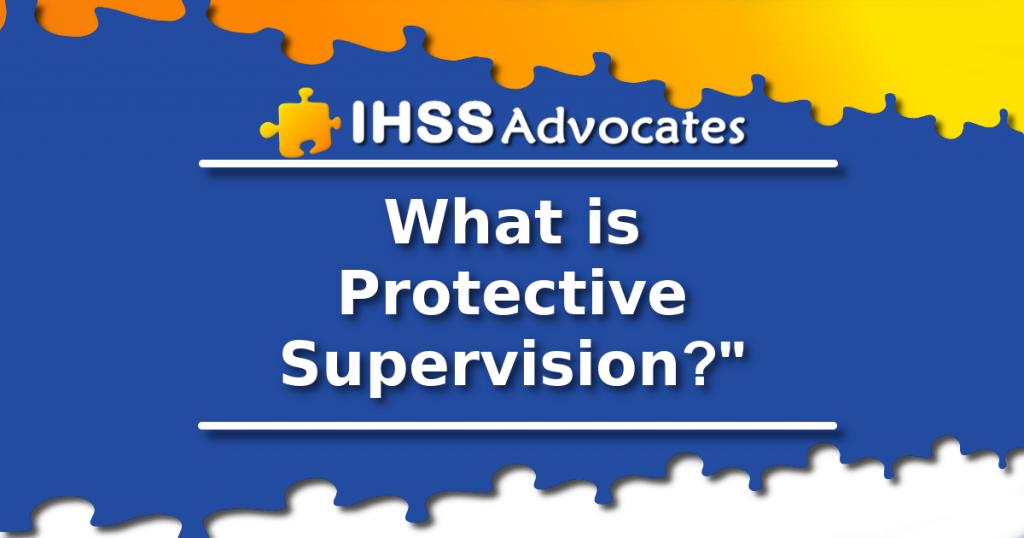What is Protective Supervision?
Simply put, Protective Supervision is an IHSS service for people who need to be observed 24 hours a day to protect them from injury. The person eligible for Protective Supervision must have a “mental illness” or “mental impairment” that impairs their judgement, memory and orientation. For example, a parent (Provider) has an autistic child that is constantly engaging in dangerous activities or unknowingly harms them self. The parent may be able to receive payment for the hours they spend watching over their child. Parent providers can get 195 or 283 hours per month when their child is granted Protective Supervision.
Continue reading if you’d like to know more about Protective Supervision. If you are ready to apply for PS, continue on to: “How to Get Protective Supervision“.
Non Self-Directing Behavior
The definition of nonself-direction can be found in All County Letter 15-25 and states:
Non Self-Directing Behaviors
- Climbing on high objects that they can fall from
- Banging their heads (walls, floors, other objects or people)
- Slapping/Punching themselves
- Scratching until blood is drawn
- Chewing of their fingers
- Eloping and wandering off
- Bolting out open doors
- Running into streets/traffic
- Following or running off with strangers
There is no age minimum for Protective Supervision.
The determination of nonself-direction is step one in a four step assessment process and must be documented by outside professionals. PS services can be difficult to obtain and requires clear documentation of why the person needs this IHSS service.
*It is important to understand that PS is not awarded for aggressive, anti-social, or episodic behaviors.
Protective Supervision Programs:
There are four IHSS programs that grant hours for PS. With-in each of these four programs the person is categorized as being “non-severe” or “severe”. If the person is proven to be “non-severe” then they will receive 195 hours per month. If the person is proven to be “severe” then they will receive 283 hours per month.
IHSS Programs With Protective Supervision Hours
| Program | Non-Severe | Severe |
|---|---|---|
| IHSS-R: IHSS Residual Program | 195 hrs | 283 hrs |
| IPO: IHSS Plus Option | 195 hrs | 283 hrs |
| PCSP: The Personal Care Services Program | 195 hrs | 283 hrs |
| CFCO: Community First Choice Option | 195 hrs | 283 hrs |
More Details and Resources
If you’d like to get more technical details and read the Protective Supervision laws and regulations, see the following resources.
- In-Home Support Services Protective Supervision
- All-County Letter (ACL) 15-25: Protective Supervision Clarifications
- Manual of Policies and Procedures (MPP) § 30-700.17
- IHSS Advocates Manual
If you are ready to apply for PS, continue on to: “How to Get Protective Supervision”
Click the button below to get a free advocate evaluation of your child’s IHSS Protective Supervision case.

